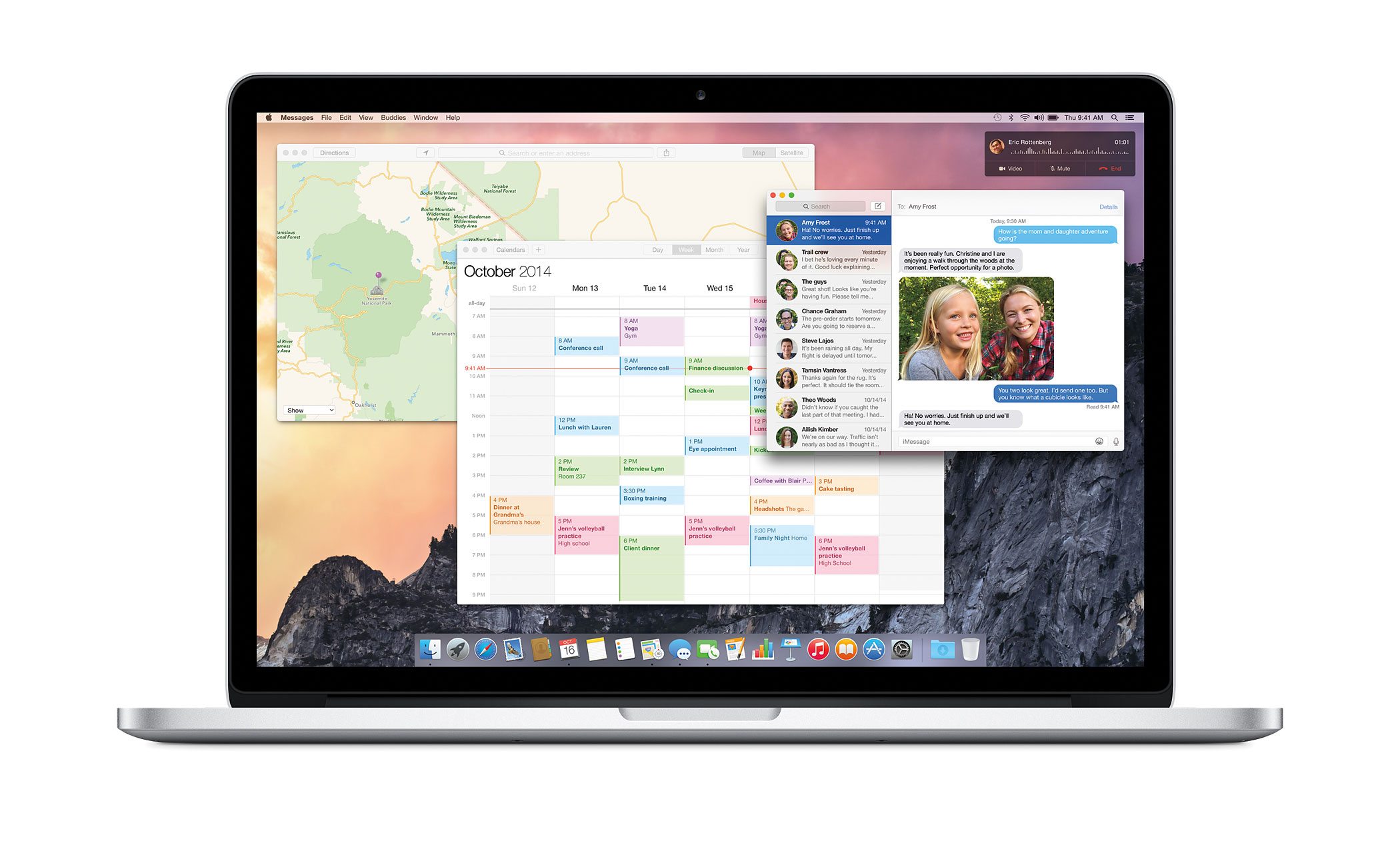
From Apple Pay to Apple Watch — and with new iPhones and iPads launched in between — the tech world has been awash with innovations flowing from Cupertino over the past few months. Less publicized but just as game-changing, OS X Yosemite, Apple’s new Mac operating system, was released last Thursday as a free upgrade.
A major release with an array of features, Yosemite has a lot more than just new graphics and typefaces: the operating system unites Apple’s desktop and mobile devices in ways they’ve never worked together before, for instance. So while you were eyeing that oversized iPhone 6 Plus and ogling that svelte iPad Air 2, here are the five coolest, new OS X features that you missed.
1. Handoff
As fun as it is to say phablets are killing tablets or tablets are killing laptops, the reality is that most computer users are carrying around more than one machine. Yosemite’s new Handoff feature gets these multiple devices thinking like one intuitive supercomputer. For example, imagine reading about the World Series in Safari on a Mac Mini, and then turning to check the weather with an iPad. With OS X Yosemite and iOS 8 installed, you’ll find a Safari icon at the bottom left of your iPad’s lock screen, ready to be swiped and take you to the same baseball story in Safari on the tablet. It’s a fantastically fluid feature that works with an array of apps, from productivity software like Numbers and Pages to personal apps like Reminders and Contacts.
2. Desktop Macs Can Make Phone Calls
It’s almost 2015 — shouldn’t this new feature be old hat? In a way it is; Skype and Google Voice users have been yapping away for years on Macs. But Yosemite uses a new technology called “Continuity” that uses Wi-Fi and Bluetooth to link iDevices and Macs owned by the same user in order to push phone calls from iPhones to Apple computers and even iPads.
The feature is enabled by default, so it may be a bit jarring the first time your iMac rings. But with all the standard calling features like call waiting, conference calling, and even custom ringtones, it’s a welcome addition to a multi-tasker’s workflow. SMS text messages, not just iMessages, even get displayed in the Messages app, turning your MacBook into a full-fledged smartphone. Still, beware deploying this new feature in an office environment: with computers ringing and people conducting conversations via speakers and microphones, this new feature could get very old, very fast.
3. Safari Gets Private and Secure
Prior to Yosemite, Safari’s Private Browsing mode was the best way to ensure Apple’s web browser would keep your secrets. But this operating system release saw an overhaul of the browser, introducing more security features like a custom history clearing option that lets users clear history, cookies, and other data from the previous hour, day, or two days. In addition, Apple has added DuckDuckGo, a non-tracking search engine that doesn’t store users’ data, to its search offerings. And with Continuity features of its own, a Safari browser running on an Apple computer can not only share its history with browsers on associated iPhones and iPads, but it can also close tabs left open on the iOS devices—a great way to ensure people don’t view the browsing habits on your mobile devices.
4. Edit Attachments Directly In the Mail App
Little bloats a computer’s hard drive more than email attachments, especially when you need to edit them. Consider this workflow: Save the attachment, edit the saved data, and reattach the updated document — that simple exchange turns one file into three, at least tripling the space it occupies on a hard drive. Yosemite’s Mail app lets users make edits to attachments within the email window through tools that allow text to be inserted, signatures to be doodled with the touchpad, and diagrams to be drawn. It’s a small but necessary feature that is much overdue, and offers a convenience that could finally (hopefully?) spell the end of the fax machine.
5. AirDrop with iOS
Speaking of Mail, Yosemite’s Mac to iDevice diplomacy marks the end of another painstaking workaround: emailing files from your mobile device to your desktop. AirDrop is nothing new — introduced in iOS 7, it previously allowed two nearby iDevices to transfer files between each other, wirelessly. But for reasons that only Apple engineers can explain, these handhelds couldn’t send files to Macs — until now. It’s such a simple feature that it hardly feels like magic, but Yosemite’s AirDrop is representative of the overhaul Apple made with this operating system build: Finally, all your machines can interact with each other and it just works.
Read next: Hands-On With Apple’s New iPad Air 2, iPad Mini 3 and Retina iMac
More Must-Reads from TIME
- Cybersecurity Experts Are Sounding the Alarm on DOGE
- Meet the 2025 Women of the Year
- The Harsh Truth About Disability Inclusion
- Why Do More Young Adults Have Cancer?
- Colman Domingo Leads With Radical Love
- How to Get Better at Doing Things Alone
- Michelle Zauner Stares Down the Darkness
Contact us at letters@time.com